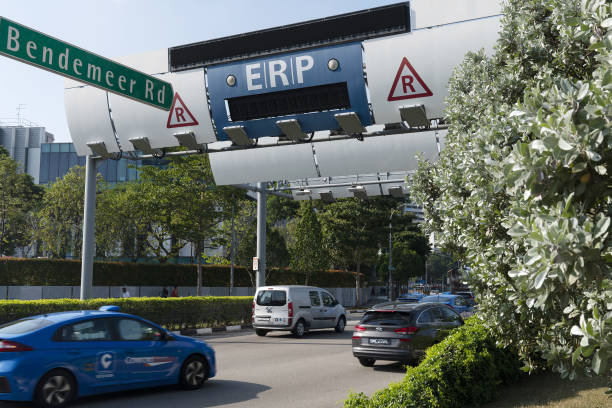ERP 2.0: Revolutionizing Business Management Systems. In today’s rapidly evolving business landscape, staying competitive and efficient is paramount. This is where ERP 2.0 comes into play, revolutionizing the way companies manage their operations and resources. From optimizing processes to enhancing collaboration, ERP 2.0 has emerged as a game-changer. In this comprehensive article, we delve deep into the world of ERP 2.0, exploring its capabilities, benefits, and how it’s reshaping the future of business management.

Introduction to ERP 2.0
For decades, Enterprise Resource Planning (ERP) systems have played a pivotal role in shaping how businesses operate. These systems have been the cornerstone of efficient resource allocation, process integration, and data management. However, the landscape of business management is ever-evolving, and as technology advances, so do the tools that drive our enterprises forward. This brings us to the concept of ERP 2.0—an innovation that redefines how we manage our operations and propel our organizations to greater heights.
At its core, ERP has always been about streamlining operations. Traditional ERP systems have seamlessly integrated different departments, from finance and procurement to manufacturing and sales, onto a unified platform. This integration has led to improved communication, enhanced visibility into processes, and ultimately, better decision-making. Yet, as businesses continue to grapple with complex challenges, such as rapid market changes, shifting consumer preferences, and the need for real-time insights, a more powerful solution is required. Enter ERP 2.0.
READ ALSO;
- Exploring the Power of AWS: Your Ultimate Guide to the AWS Cloud Provider
- High Deductible Auto Insurance: Understanding the Pros and Cons
- Everything You Need to Know about Car Insurance for Days
- Tax Credit for College Students: A Guide to Maximizing Your Savings
- Understanding Freight Factoring Rates: A Comprehensive Guide
From Integration to Intelligence: The ERP 2.0 Advantage
ERP 2.0 is not just an incremental upgrade; it’s a paradigm shift in how we approach business management. While its predecessor focused primarily on integrating various functions, ERP 2.0 takes this a step further by infusing cutting-edge technologies into the mix. The triumvirate of artificial intelligence (AI), machine learning (ML), and cloud computing converges to create a dynamic and intelligent ecosystem that adapts to the needs of modern enterprises.
Imagine an ERP system that not only integrates processes but also learns from data patterns, predicts future trends, and provides actionable insights. This is the promise of ERP 2.0. By harnessing AI and ML, ERP 2.0 can sift through immense volumes of data, spotting trends, anomalies, and correlations that might elude human analysis. This predictive capability empowers businesses to make informed decisions, anticipate market shifts, and stay one step ahead of the competition.
Cloud-Powered Agility and Collaboration
In the digital age, where remote work and global collaborations are the norm, cloud computing emerges as a game-changer. ERP 2.0 leverages cloud technology to provide real-time accessibility to information, transcending geographical boundaries and time zones. This means that a sales executive in one part of the world can seamlessly collaborate with the production team on the other side of the globe. Such agility in communication not only speeds up processes but also fosters innovation as diverse teams collaborate on projects.
Moreover, the cloud-based nature of ERP 2.0 enhances scalability. As your business grows, the system can effortlessly accommodate increased data and users. This scalability ensures that the solution remains effective and efficient, even as your operations expand.
Strategic Decision-Making in a Dynamic Landscape
The most remarkable aspect of ERP 2.0 is its role in driving strategic decision-making. By continuously learning from data and adapting to new information, ERP 2.0 transforms from a static tool to an active partner in your business’s growth. This agility is crucial in today’s fast-paced world, where decisions made yesterday might not be applicable tomorrow. ERP 2.0 equips you with insights that empower you to pivot, seize opportunities, and navigate challenges with confidence.
In conclusion, ERP 2.0 represents the evolution of traditional ERP systems into intelligent, agile, and adaptable solutions. This innovation doesn’t just streamline processes; it augments them with predictive capabilities, cloud-powered collaboration, and strategic insights. As businesses look to the future, ERP 2.0 stands as a beacon of progress—a tool that empowers organizations to not only manage their resources but also to shape their destiny. Welcome to the era of ERP 2.0, where technology is not just a tool, but a catalyst for transformation.
Unveiling the Potential of ERP 2.0
Harnessing AI for Predictive Analytics
With the integration of AI and ML, ERP 2.0 has the ability to analyze vast amounts of data, providing insights that enable businesses to make informed decisions. By analyzing historical data and identifying patterns, ERP 2.0 helps companies forecast demand, optimize inventory levels, and enhance supply chain efficiency.
Enhanced User Experience through Cloud Computing
Cloud-based ERP 2.0 systems offer a seamless user experience, allowing employees to access real-time information from anywhere, at any time. This flexibility not only increases productivity but also fosters collaboration among remote teams, driving innovation and agility.
Real-time Data for Informed Decision-making
ERP 2.0 empowers organizations with real-time data visibility across various departments. This enables swift decision-making, as managers can access accurate insights into sales, inventory, production, and financial data. With a holistic view of operations, businesses can respond promptly to market changes and customer demands.
Personalization and Customization
ERP 2.0 systems are designed to be highly customizable, adapting to the unique needs of each business. Companies can tailor the software to match their workflows, ensuring maximum efficiency and alignment with their strategic objectives.
Optimized Resource Allocation
Through intelligent resource allocation, ERP 2.0 ensures that every asset is utilized efficiently. From human resources to machinery and raw materials, the system allocates resources based on demand, reducing wastage and improving cost-effectiveness.
Embracing the Future: ERP 2.0 Implementation
Implementing ERP 2.0 is a strategic move that requires careful planning and execution. Here’s a step-by-step guide to a successful implementation:
- Assessment of Current Processes: Begin by evaluating your existing processes and identifying pain points that ERP 2.0 can address. This assessment will serve as a foundation for your implementation strategy.
- Vendor Selection: Choose a reputable ERP 2.0 vendor that aligns with your business goals. Look for a vendor that offers robust features, scalability, and responsive customer support.
- Customization and Configuration: Work closely with the vendor to customize the ERP 2.0 system according to your business requirements. Ensure that the software integrates seamlessly with your existing tools.
- Data Migration: Transfer your data from legacy systems to the new ERP 2.0 platform. This process requires careful planning to avoid data loss or corruption.
- Training and User Adoption: Provide comprehensive training to your employees to ensure they can effectively use the new system. Encourage user adoption through workshops and continuous support.
- Testing and Quality Assurance: Thoroughly test the ERP 2.0 system before its full-scale implementation. Address any glitches or issues that may arise during testing.
- Go-live and Monitoring: Launch the ERP 2.0 system and closely monitor its performance. Gather feedback from users and make necessary adjustments for optimal functionality.
Frequently Asked Questions (FAQs) about ERP 2.0
In our quest to explore the realm of ERP 2.0, we’ve gathered some of the most common questions you might have about this revolutionary concept. Let’s delve into the answers and gain a deeper understanding of how ERP 2.0 is shaping the future of business management.
How does ERP 2.0 differ from traditional ERP systems?
ERP 2.0 is not just an upgrade; it’s a transformation. While traditional ERPs excel at integrating processes and managing data, ERP 2.0 takes it a step further. It embraces advanced technologies like artificial intelligence (AI), machine learning (ML), and cloud computing. This infusion empowers ERP 2.0 to offer predictive analytics, real-time insights, and dynamic decision-making capabilities, propelling businesses beyond the limitations of traditional ERPs.
Can ERP 2.0 be integrated with existing software?
Absolutely! ERP 2.0 is designed to integrate seamlessly with your existing software and tools. Whether it’s your CRM, sales platform, or other critical systems, ERP 2.0’s customization and configuration ensure a smooth integration process. This means you can leverage its advanced features without disrupting your established workflows.
What industries can benefit from ERP 2.0?
The beauty of ERP 2.0 lies in its versatility. It’s not limited to a specific industry; instead, it caters to a broad spectrum of sectors. Whether you’re in manufacturing, retail, healthcare, finance, or any other field, ERP 2.0 can be tailored to suit your unique needs. This adaptability ensures that businesses of all sizes and industries can harness its transformative potential.
Is data security a concern with cloud-based ERP 2.0?
Security is paramount in the world of ERP 2.0, especially in cloud-based implementations. Cloud providers take extensive measures to ensure the safety of your data. From encryption and regular updates to strict access controls, your data’s integrity is safeguarded. Moreover, cloud providers adhere to industry-specific compliance regulations, providing an additional layer of assurance.
How does ERP 2.0 enhance collaboration?
Collaboration knows no bounds with ERP 2.0. Its cloud-based nature empowers teams to collaborate seamlessly, regardless of geographical barriers. This real-time accessibility enables diverse teams to work together on projects, share insights, and innovate collectively. The result? Enhanced communication, streamlined workflows, and accelerated innovation.
What benefits can small businesses reap from ERP 2.0?
ERP 2.0 extends its benefits to businesses of all sizes, including small enterprises. For small businesses, ERP 2.0 becomes a powerful tool for streamlining operations, optimizing resource allocation, and gaining valuable insights into performance. In a competitive landscape, ERP 2.0 equips small businesses with the tools they need to make informed decisions and drive growth.
These FAQs offer a glimpse into the realm of ERP 2.0 and its transformative capabilities. As technology continues to shape the business landscape, ERP 2.0 emerges as a beacon of innovation, offering efficiency, collaboration, and strategic insight that will define the future of business management. If you’re seeking a way to stay ahead in a rapidly changing world, ERP 2.0 might just be the solution you’ve been waiting for.
Conclusion: Embrace the Future with ERP 2.0
As businesses continue to evolve, embracing technology becomes essential for sustainable growth. ERP 2.0 stands at the forefront of this evolution, empowering companies to manage their resources, make informed decisions, and stay competitive in a dynamic market. By combining AI, cloud computing, and real-time analytics, ERP 2.0 redefines business management, opening doors to unparalleled efficiency and innovation.
